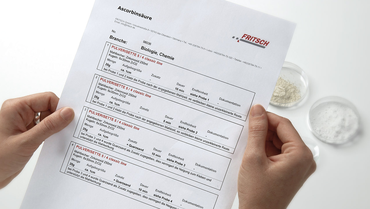Назад к обзору
Pesticide and antibiotics residues in food - tomatoes used as an example
Pollutants contaminate foodstuffs
Residues of drugs or transformation products of those are often found in human excretions. Also leftovers of drugs are often thoughtlessly discarded into the wastewater by the public. The drawn from the wastewater sewage sludge is partially distributed as fertilizer onto fields. It is also common knowledge that antibiotics are added to animal feed. Remainders of these again are applied across fields as dung and liquid manure. Up until now it was not clear though, if these substances are absorbed by plants and passed along in the food chain.
Each analysis requires the provision of a representative sample from the entire sample amount. Therefore, as a rule larger amounts of the product are usually available and it has to be ensured that through comminution and sample dividing, a representative sample is added to the analytical instrument.
Treatment of tomatoes
Tomato plants are treated with various pesticides. Hereby the spray chemicals end up directly on the fruit, as well as directly inside the soil and therefore indirectly via the nutrient transport inside the fruit. Also the use of organic fertilizers from animal husbandry is widely spread. The consumer though desires unpolluted food. The production of food in the demanded quality is without the use of pesticides and fertilizers not possible though. Consequently the necessity arises to inspect food in regards to possible residues. Often the sought after substances are temperature sensitive. This plays a major part during the preparation of the sample.
Cryogenic processing of tomatoes
Preparing tomatoes cryogenically for analytical purposes is possible with the Mortar Grinder PULVERISETTE 2 if the tomatoes are chopped into small chunks and embrittled with liquid nitrogen. For this particular application FRITSCH offers as accessories for the mortar mill a stainless steel mortar bowl. This bowl can be cooled down with liquid nitrogen and even during the comminution additional liquid nitrogen may be added. Hereby a complete cryogenic comminution with liquid nitrogen is possible.
-
Download the FRITSCH-report as PDF file
Pesticide and antibiotics residues in food for example tomatoes
-
Detailed grinding reports
-
Sources and continuative literature
Назад к обзору








